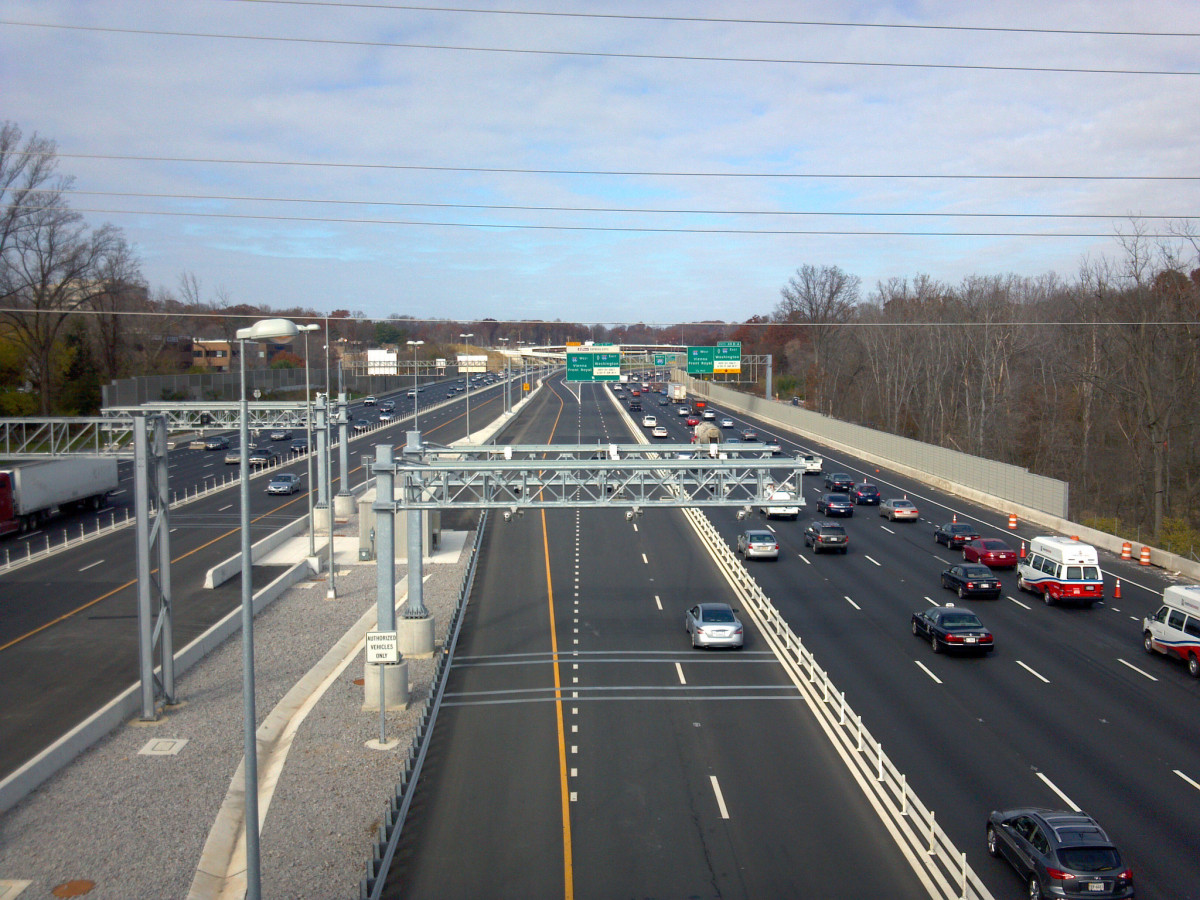HOT lanes on I-495, Virginia By BeyondDC licensed under Creative Commons.
Congestion pricing is a strategy that charges drivers more for road surface use at peak peak times. It is an idea with many potential benefits, from reducing traffic to improving the environment.
But congestion pricing also draws criticism on equity, as critics say it can allow the rich, those who can easily pay for services, to overtake the rest. Others argue it could punish low- and middle-income workers who are totally dependent on car ownership to get to work. Indeed, we live in a time when reasonable cost means that many frontline workers have moved to the suburbs, often to situations where they must drive.
On the other hand, congestion pricing can be a tool for economic capital, depending on how it is implemented. If buses move in free-flowing traffic, there is an auto-capital bonus, as low-income people tend to rely on public transportation and can now easily access other jobs and services. And if congestion pricing lowers air pollution, it is beneficial for low-income, marginalized communities that suffer disproportionately from asthma and other respiratory diseases. For example, “In Singapore, London and Stockholm each saw a drop in vehicle emissions after the congestion prices were introduced” – in these cases, the Cordon program – according to We are a transportation center.
And although it is sometimes politically difficult, there are strategies available to address capital concerns with congestion pricing, such as lowering or eliminating commissions for low- and / or middle-income workers.
HOT routes attract criticism
One form of congestion pricing, HOT lane programs like this On the Virginia Strip, And similar Suggested one in Maryland, Was Criticism from the left For several reasons. They are likely to cause new traffic by pulling more cars onto the roads. This is especially true if they are used to widen roads instead of converting existing capacity.
The second main argument against HOT Lanes is this They are unequal, allow for the affluent Overtake low-income people and drive in harmony between free-flowing traffic, while most people sit trapped as always. for example, Federal Road Administration (FHWA) Explains that during peak hours on Express Lanes in Orange County, California, “the two ‘managed’ express lanes each carry almost twice as many vehicles per lane as the free lanes.”
Proponents, however, argue that HOT Lanes is beneficial for low-income people when they need to get to the venue quickly, as an important meeting. According to the FHWA “In places like San Diego, support from low-income travelers is over 70 percent.”
Proponents of HOT Lanes also argue that an older model, High-Occupancy Vehicle (HOV) lanes restricted to multiple-vehicle vehicles, was not widely used. Moreover, at HOT Lanes, paid drivers may end up actually subsidizing a lane that is also used by buses.
As with most programs, HOT routes can be more or less equal depending on how they are implemented; Indeed, so can cordon pricing.
How to maximize equity
All types of congestion pricing have an equity problem, as “pricing is a regressive commission, like most other transportation charges, including gas taxes, sales taxes and parking fees,” explains the Eno Center report. In other words, people pay the same commission whether they Can afford it easily or not. Still, there are several ways to balance this.
Most importantly, in order to maximize equity and environmental impact, congestion fees must be invested in bus and rail systems. Notably, “On San Diego’s I-15 HOT lanes, revenue generated by toll payers funded transportation improvements that contributed to a 25% increase in the number of bus passengers,” according to the FHWA. Bus service has also been increased with the introduction of congestion charging in London.
Still, low-income residents are increasingly living in places that are not accessible in transit and may not be able to enjoy the benefits of congestion charging. Therefore another strategy for an egalitarian version of congestion pricing is a variable of income-based charges. In New York City’s planned congestion pricing, for example, households in affected areas that earn less than $ 60,000 a year receive a tax credit equal to the fee, the Eno Center report explains.
A variety of other circumstances can also be grounds for exemption from congestion pricing. People with disabilities, truck, taxi and Uber drivers who depend on driving for a living, electric car drivers and others can get an exemption. However, if too many exceptions are given, the load may return; A balance must be reached.
Is it time now?
If, as Part I in this series has shown, congestion pricing is the easiest to implement during a congestion crisis, it may not seem like the ideal time right now. After all, the epidemic has greatly reduced traffic and hence the need to fight loads. However, the epidemic has also revealed the benefits of free-flowing traffic, and a return to the old status quo may seem tasteless. Indeed, in 2021, U.S. passengers were paralyzed for 36 hours, Ten hours more than in 2020, Though less dramatic than the 63 hours of 2019, according to transportation analysis firm Inrix. The possibility of going back to the old ways may be enough to get more cities to implement congestion pricing.
Beyond the epidemic, climate change is also an increasingly urgent threat – and congestion pricing can be one way to reduce this, by reducing traffic congestion, improving public transport and ultimately reducing air pollution. And reducing environmental risks, which most affect the poorest and most marginal neighborhoods, is always a step towards equality.
This article is part of a limited series examining congestion pricing, made possible with funding from Bloomberg’s philanthropy and the climate challenge of American cities. Greater’s Editorial Department Greater Washington maintains editorial control and independence in accordance with our requirements Editing policy. As such, an editorial copy is not shared with the givers in advance, and they have no control over the content. Our journalists follow the ethics guidelines of Professional Journalists Association.
